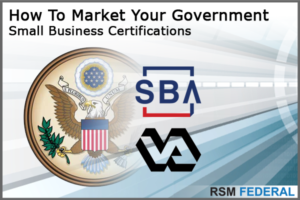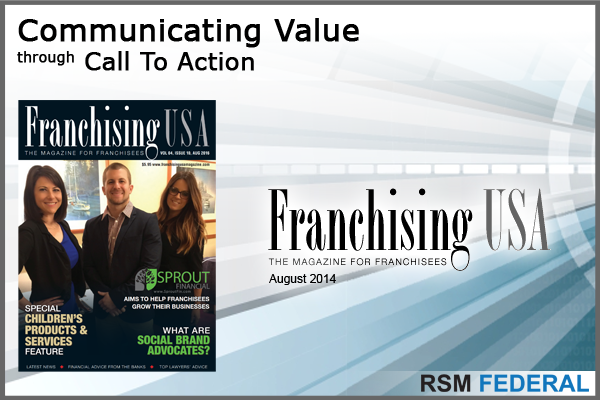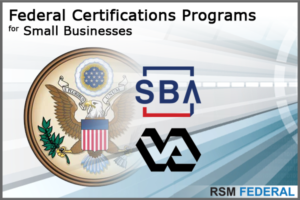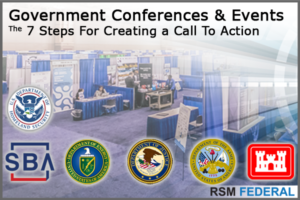Market Your Government Small Business Certifications
You Don’t Win Government Contracts With Your Certification. . .
 Small business certifications, including 8a certification (for socially and economically disadvantaged), woman owned small business (WOSB), veteran owned small business (VOSB), service disabled veteran owned small business (SDVOSB) and Hubzone – are all powerful differentiators. But that’s it. They are only differentiators.
Small business certifications, including 8a certification (for socially and economically disadvantaged), woman owned small business (WOSB), veteran owned small business (VOSB), service disabled veteran owned small business (SDVOSB) and Hubzone – are all powerful differentiators. But that’s it. They are only differentiators.
My team has worked with thousands of companies and this is a common challenge and misconception.
Tell me if this sounds familiar?
- Business cards where the logos for your woman-owned, veteran-owned, HUBZone, or 8a certification is just as large as your corporate logo?
- When you look at the homepage of your website, your small business certifications, your socio-economic statuses, have logos that are built into the top graphic of your homepage or they are elsewhere on the page… and they are at least an inch in diameter?
- Your capability statement (line card, project list, marketing slick, etc.) shows logos for your WOSB or 8a certification at the top of the page where it’s the first thing you see when you look at it.
- Your website and marketing materials start with, “We’re a small woman-owned business that provides…” or “We’re an 8a, veteran-owned small business that provides…”
- When you walk into a meeting with a prospect or potential teaming partner, you start your 45 second introduction with “We’re an 8a or woman owned or service disabled veteran owned… etc.”
In general, this is the norm for many small businesses. I’m going to explain why it’s wrong, from a business perspective, why it minimizes the value of what you sell, and how you should communicate your small business certification. Don’t take my word for it. Our Federal Access members have won more than $2 Billion in small business government contracts the last five years using these strategies.
Yes, I know. . . this is what you’ve been told to do. Small business offices, your mentors, your colleagues, consultants, and various non-profits all tell you to, “Put it front and center! There are federally mandated set-aside percentages for your company! Larger companies and potential partners have sub-contracting plans that require that they team with companies just like yours! Use your status!”
This does NOT make sense and I’ll explain why.
Softly Communicate Your 8a Certification or Other Status
For the last five years, I’ve supported the SBA’s Emerging Leader’s Program. As part of that support, I work alongside various state and federal contracting officers and organizations that focus on supporting the small business community and small business certification.
During one class, I made the point that regardless of market (commercial or government), you need to “softly” position your small business certifications. The Director of one of our local non-profits, that focuses on helping small businesses get into government, very forcefully told the class that I didn’t know what I was talking about. I sat there and waited for someone to ask why? Eventually someone asked me to explain and when I did, every business owner in the class had their expectations realigned. For the Director of our local non-profit – it’s not her fault. It’s how she was trained, how she trains her counselors, and it’s why most small businesses start most introductions with something similar to, “Hi, I’m Josh and we are an 8a, woman owned small business that provides these services.”
Think about this:
A prospect (government or commercial) buys from you because of the value you provide. It’s not because of your products or services. There are hundreds of companies that sell what you sell. It’s not because of your status or that you have an 8a certification. In fact, you could have two or three small business certifications but if you don’t convince your prospect that you’re competent, your woman-owned, veteran owned, or 8a certification just doesn’t matter.
Your small business certification is not as strong a differentiator as you’ve been led to believe. Sure, it’s a differentiator but you don’t win contracts because of it.
It’s not what you sell. It’s the value of the products or services you provide. It’s not the statuses or small business certifications that your company holds. Those are just regulatory buckets. Yes, the government can sole source if you have 8a certification. Yes, the government can sole source 8m (woman-owned small business) contracts – but you can read an earlier post about how unlikely and difficult it is to actually win an 8m sole source contract.
Your company will NOT win a set-aside contract if you don’t convince the prospect that the value of what you provide is outstanding.
A prospect buys from you because of the value you provide. It’s not what you sell. It’s not the product or services you sell. It’s not your small business certification.
Now some of you are thinking, “Oh come on Josh! This is just semantics.” To some extent, you’re correct. But from a business perspective, this is more than semantics. It’s about how you approach the market, position your company with prospects and partners, and how you differentiate and facilitate a level of maturity that is not commonly found in small business.
What Happens When You Focus On Value?
One of our Members asked for help preparing for a meeting with a senior contracting officer at Fort Leavenworth in Kansas. We discussed how to approach the meeting and how to follow-up. Most important, we told them not to mention their status or small business certifications during their 45 second introduction. (They have 8a certification and their woman-owned.) Jump forward a couple days. The meeting was going well, the business owner gave a short overview of the company, immediately took control of the discussion, and about 30 minutes into the meeting, it came out that she had multiple small business certifications.
The contracting officer leaned forward and said, “We have contracting goals that require that we work with companies like yours. Why didn’t you tell me you had woman-owned and 8a certification?
She said, “Because that’s now who we are. That’s not the value we provide.” The contracting officer leaned back and said, “That’s the best answer I’ve ever heard.”
Until that point in the meeting, the business owner focused on collecting intelligence and communicating the value of her products and services. There are several other techniques and strategies that had a role during this meeting but that’s for another time.
It’s not what you sell. It’s not your small business certification. It’s the qualifiable and quantifiable value that you communicate to your prospects and partners.
Don’t worry, you’re small business certifications will eventually come out in every discussion. But you should never lead with it! Do business developers for Northrup Grumman or Lockheed Martin introduce themselves as, “Hi, I’m John with Lockheed and we’re a large business that provides…”? Of course not. They rely on their past performance and the perceived value of their company and its capabilities and past performance. Yes, we all know they’re a large company but why do only small businesses introduce themselves with their size?
Yes – this is commonly accepted and taught to most small companies. But from a business perspective, it makes little sense.
This is why you don’t put your status on the front of your business card; why you don’t put it front and center on your homepage, and why you should stop introducing your company as a status. Don’t worry, I’m not saying to not communicate your status. It will always come out. That’s how the market operates. But you don’t lead with it! If you follow these recommendations, you’ll win more contracts because you’re focused on communicating your value.
You’re not a status. You’re a company that provides value.
Are You Ready To Get Certified?
If you’re not sure if you qualify
– or –
you’re ready to start your certification, let’s talk.
###
Joshua Frank is the Founder and Managing Partner at RSM Federal, a federal consulting and business strategy firm that provides companies with the templates, processes, and strategies for winning government contracts. For more information about RSM Federal, please visit www.rsmfederal.com
 Whether your franchise is commodity or service-based, sell sandwiches, cut hair, or perform disaster restoration, you want to think in terms of how you qualify and quantify your value. We’re going to discuss how to communicate value and integrate with what marketers call a Call to Action (CTA). We’re going to discuss this, step by step.
Whether your franchise is commodity or service-based, sell sandwiches, cut hair, or perform disaster restoration, you want to think in terms of how you qualify and quantify your value. We’re going to discuss how to communicate value and integrate with what marketers call a Call to Action (CTA). We’re going to discuss this, step by step. The goal behind small business certification programs is to help level the playing field for small businesses. The 8a, woman owned (WOSB), veteran owned (VOSB), service disabled veteran owned (SDVOSB), and Hubzone certifications allow small businesses to compete fairly against larger businesses with more resources. The key part of that statement is “compete fairly”. Many companies believe that a socio-economic status entitles them to automatically win contracts. That is just not true.
The goal behind small business certification programs is to help level the playing field for small businesses. The 8a, woman owned (WOSB), veteran owned (VOSB), service disabled veteran owned (SDVOSB), and Hubzone certifications allow small businesses to compete fairly against larger businesses with more resources. The key part of that statement is “compete fairly”. Many companies believe that a socio-economic status entitles them to automatically win contracts. That is just not true. Trade shows and government conferences are one of the costs that companies take into account in the annual marketing budget. This makes sense as conferences and events are one way companies solve the challenge of identifying how to find government contracts. It makes sense that you go into each event with a strong game plan for how your company will achieve the maximum Return on Investment (ROI). How many times have you heard the phrase “government conferences and trade shows are a waste of time and money” from one of your colleagues? Probably quite a bit. In fact, many companies are frustrated with government conferences because they don’t achieve the results they want.
Trade shows and government conferences are one of the costs that companies take into account in the annual marketing budget. This makes sense as conferences and events are one way companies solve the challenge of identifying how to find government contracts. It makes sense that you go into each event with a strong game plan for how your company will achieve the maximum Return on Investment (ROI). How many times have you heard the phrase “government conferences and trade shows are a waste of time and money” from one of your colleagues? Probably quite a bit. In fact, many companies are frustrated with government conferences because they don’t achieve the results they want.